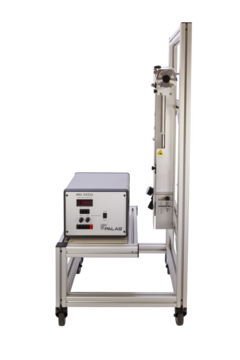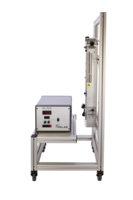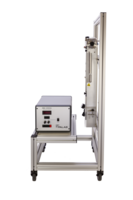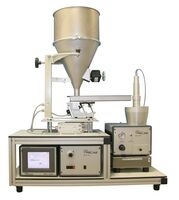RBG 2000
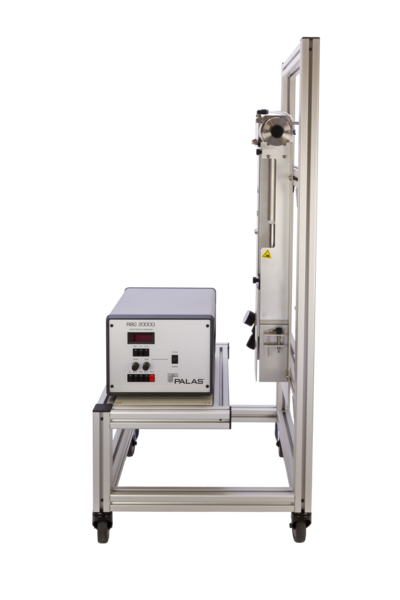
Low-concentration solid particle aerosols from powders are required for many applications in research, development, and quality assurance and for calibrating particle measurement devices.
For more than 25 years, the RBG system has been successfully used worldwide for the reliable dispersion of non-cohesive powders, e.g., mineral dusts, active pharmaceutical ingredients, pollen, etc., within the size range of < 100 µm and with a fine fraction of < 100 nm. Monolithic solid materials, e.g., blackboard chalk, are finely dispersed with optimal dosing constancy.
The difference between RBG 2000 and RBG 1000 make the feedstock reservoirs of RBG 2000, which are longer than the feedstock reservoirs of RBG 1000, and the availability of a reservoir with a bigger diameter. The fill level of the feedstock reservoir of RBG 2000 is 180 mm. Thus, the unique advantage of RBG 2000 compared to RBG 1000 is that the dosing time with the same mass flow can be extended by more than a factor of 3. Mass flows of between approx. 200 mg/h and 560 g/h are dispersed with optimal dosing constancy.
Optional: Pressure-resistant up to 3 bar
Operation principle
Proven technology
The powder to be dispersed is gradually poured into the cylindrical solid material reservoir and compressed with a tamper. The filled reservoir is inserted into the dispersing head on the RBG, and the powder, which has been uniformly compressed at the filling level, is conveyed onto a rotating brush at a precisely controlled feed rate. The adjustable volume flow moves over the tightly woven precision brush at a very high speed and blows the particles out.
The dispersing head assembly comprises a dispersing head, dispersing cover, precision brush, and solid material reservoir.
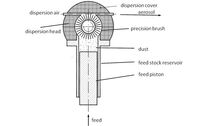
Fig. 1: RBG system schematic diagram
Dosing is performed based on a precisely controlled feed rate on the feed piston. The desired mass flows can be quickly and reproducibly defined based on the cross-section of the reservoir, the precisely adjustable feed rate of the feed piston, and the compacted density of the powder in the reservoir.
Mass flows of RBG 1000 / 2000 (compacted density 1 g/cm³)
| Reservoir diameter | Fill quantity | Feed rate 1 mm/h | Feed rate10 mm/h | Feed rate 100 mm/h | Feed rate 700 mm/h |
|---|---|---|---|---|---|
| 7 mm (RBG 1000) | 2.7 g | 38 mg/h | 380 mg/h | 3.8 g/h | 26.6 g/h |
| 10 mm (RBG 1000) | 5.5 g | 78 mg/h | 780 mg/h | 7.8 g/h | 54.6 g/h |
| 14 mm (RBG 1000) | 17 g | 150 mg/h | 1.5 g/h | 15 g/h | 105 g/h |
| 16 mm (RBG 2000) | 30 g | 200 mg/h | 2 g/h | 20 g/h | 140 g/h |
| 20 mm (RBG 1000) | 35 g | 310 mg/h | 3.1 g/h | 31 g/h | 217 g/h |
| 28 mm (RBG 1000) | 49.2 g | 616 mg/h | 6.16 g/h | 61.6 g/h | 430 g/h |
| 32 mm (RBG 2000) | 88 g | 800 mg/h | 8 g/h | 80 g/h | 560 g/h |
Table 1: Mass flows of RBG system (compacted density 1 g/cm3)
The powder conveyed from the reservoir by the precision brush is virtually completely dispersed into individual particles up to < 100 nm by the dispersing air in the dispersing head (see Fig. 2).
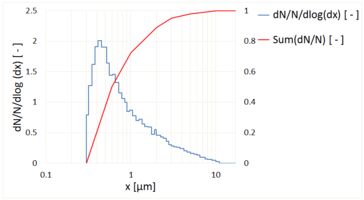
Fig. 2: Particle size distribution with welas® digital 2000
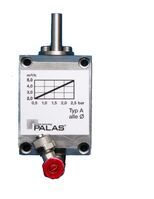
Fig. 3: Type A dispersing cover
Two different dispersing covers can be used for optimal dispersion (see Fig. 3, additional details under "Accessories"), including Type A and Type D.
Dispersion covers RBG system
| Cover | Particle size | Reservoir diameter | Volume flow |
|---|---|---|---|
| A | < 0.1 – 200 µm | 7 – 32 mm | 33 – 80 l/min |
| B | < 0.1 – 200 µm | 7, 10 and 14 mm | 17 – 40 l/min |
| C | < 0.1 – 200 µm | 7 mm | 8 – 20 l/min |
| D | 200 – 1,000 µm | 7 – 32 mm | 33 – 80 l/min |
Table 2: Dispersion covers
Different versions of the RBG system
| System | Feed rate mm/h | Reservoir diameter in mm | Reservoir length in mm | Min. mass flow | Max. mass flow |
|---|---|---|---|---|---|
| RBG 1000 | 700 | 7 - 28 | 70 | 3.8 g/h | 430 g/h |
| RBG 1000 D | 700 | 7 - 20 | 70 | 3.8 g/h | 219 g/h |
| RBG 1000 G | 300 | 7 - 28 | 70 | 3.8 g/h | 184 g/h |
| RBG 1000 GD | 300 | 7 - 20 | 70 | 3.8 g/h | 94 g/h |
| RBG 1000 L | 700 | 10, 14 | 70 | 3.8 g/h | 107 g/h |
| RBG 1000 SD | 700 | 7 - 20 | 70 | ||
| RBG 1000 SG | 300 | 7 - 20 | 70 | ||
| RBG 1000 I | 700 | 7 - 28 | 70 | ||
| RBG 1000 ID | 700 | 7 - 20 | 70 | ||
| RBG 1000 ISD | 700 | 7 - 20 | 70 | ||
| RBG 2000 | 700 | 16 - 32 | 180 | ||
| RBG 2000 D | 700 | 16, 20, 28 | 180 | ||
| RBG 2000 SD | 700 | 16, 20, 28 | 180 |
Table 3: Different versions of the RBG system
I = version for inhalation
D = pressure-resistant
G = low feed rate
L = easily removable and weighable dosing unit
S = nitrogen version
The construction design of the RBG system allows for operation in "powder"/"no powder" pulse mode with cycle lengths ranging down to a second. The function can be set manually via the "Stop/Start" and "Forward" keys or automatically via an electric timer switch.
All RBG versions can be optionally controlled using a remote control or PC.
Benefits
Your special advantages
- Optimal short-term and long-term dosing constancy
- Double the dosing time in comparison with the RBG 1000
- Disperses virtually any non-cohesive dusts
- Easy to switch out different solid material reservoirs and dispersion covers
- Easy to determine and adjust the mass flow
- Able to adjust higher mass flows than the RGB 1000
- Pulse mode
- Easy to clean
- Quick and easy to operate
- Reliable function
- Low maintenance
- Reduces your operating expenses
Applications
Individual solutions for various industries
- Filter industry
- Determination of fractional separation efficiency
- Determination of total separation efficiency
- Long-term dusting
- Filter media and assembled filters
- Dust filters
- Vacuum cleaners and vacuum filters
- Car interior filters
- Engine air filters
- Calibrating particle measurement devices
- Flow visualization
- Inhalation experiments
- Tracer particles for LDV, PIV, etc.
- Surface coatings
Technical features
In detail
- Particle size range
- 0.1 – 100 µm
- Maximum particle number concentration
- Ca. 107 particles/cm3
- Volume flow
- 40 – 80 Nl/min
- Mass flow (particles)
- 1 – 560 g/h (with an assumed compacted density of 1 g/cm3)
- Filling height
- 180 mm
- Filling quantity
- 36 g (reservoir Ø = 16 mm), 56 g (reservoir Ø = 20 mm), 110 g (reservoir Ø = 28 mm), 144 g (reservoir Ø = 32 mm)
- Power supply
- 115 – 230 V, 50/60 Hz
- Particle material
- Non-cohesive powders and bulks
- Dosing time
- Several hours nonstop
- Pre-pressure
- 4 – 8 bar
- Carrier/dispersion gas
- Random (generally air)
- Maximum counter pressure
- 0.2 barg
- Compressed air connection
- Quick coupling
- Feed rate
- 5 – 700 mm/h
- Reservoir inner diameter
- 16, 20, 28, 32 mm
- Aerosol outlet connection
- Dispersion cover type A: Øinside= 5 mm, Øoutside = 8 mm; Dispersion cover type D: Øinside= 5 mm, Øoutside = 8 mm
- Dispersion cover
- Type A, Type D
- Dimensions
- 1.160 • 530 • 500 mm (H • B • T)
- Weight
- Approx. 40 kg
